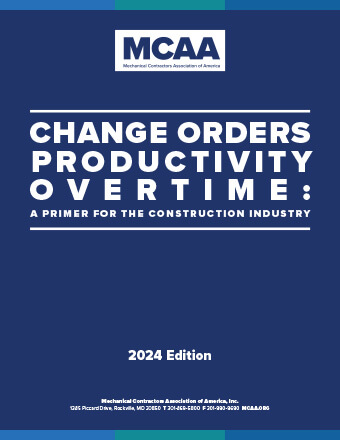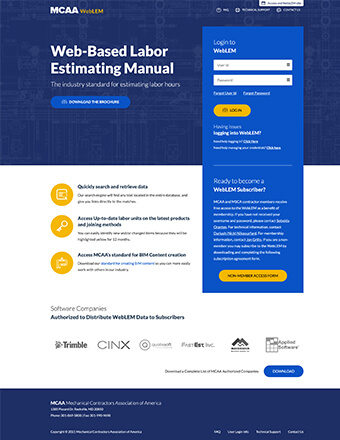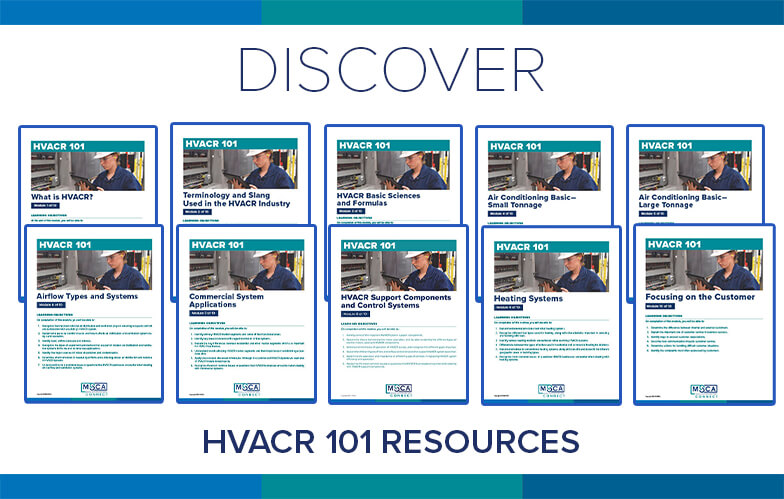Find A Resource
Use the form below to find the specific solution to your challenge and advance your business.
Featured Resources
MCAA’s Virtual Trade Show connects our contractor members with the members of MCAA’s Manufacturer/Supplier Council.
CNA released the top loss trends in construction and the mechanical industry from their book of business highlighting workers compensation, auto, and general liability loss drivers. They are also highlighting several Safety Week resources that can support your company’s safety activities during the week, which runs from May 5-9.
The ripple effect of change begins with one small action – and in the mechanical industry, women are making waves. The WiMI Conference offers an unparalleled opportunity to connect with like-minded professionals, gain valuable knowledge, and be inspired by the journeys of those who have dared to lead. Whether you’re new to the industry or a seasoned executive, the WiMI Conference is a platform for you to find your voice and expand your influence within the industry. Join us at the WiMI Conference – empower yourself, connect with others, and leave ready to make your mark on the industry. Register now!
As communities face challenges with aging water and underground infrastructure, an increasing number of contractors are discovering the benefits of HDPE pipe to address those challenges. HDPE is a cost-effective, easy-to-install, and versatile piping material for any underground utility project—from communications, electrical, and geothermal to sewer and domestic water. Contractors have used HDPE for over 50 years, yet its applications continue to expand, particularly in water and sewer line upgrades.
Each week, MCAA will highlight one or more of the educational resources that are free to MCAA members as a benefit of membership. This week, we focus on MSCA’s HVACR 101 Workbooks. The series of 10 workbooks familiarize new staff with the industry equipment, processes and terminology they’re likely to encounter to help them succeed in their jobs.
P.J. Dionne Company found that using Sloan’s AER-DEC® Integrated Sinks helped make a complex installation at Logan Airport a more collaborative effort. (SLOAN is a benefactor of MCAA25.) Sloan’s AER-DEC Integrated Sinks contribute to the airport’s sustainability goals while offering high standards of hygiene and efficiency.
The PCA Plumbing Service Conference is right around the corner – happening May 19–21 in St. Louis, MO – and there are only a few spots left! Don’t miss out on your best opportunity to learn, share, and grow in your understanding of operational plumbing service. With industry leaders, in depth tours, and invaluable networking, this is a conference you don’t want to miss. Sign up now!
Braidyn anticipates graduating from Indiana State University in May 2027 with a degree in construction management. He has been active in his student chapter since 2023 and has held the positions of Treasurer and Fundraising Chair. This summer, Braidyn will be interning with MCAA Member, BMWC Constructors.
Congratulations to MacDonald-Miller Facility Solutions, UMC and STIRRETT JOHNSEN, INC., winners of the MCA of Western Washington (MCAWW) Annual Safety Excellence Awards.
MCAA’s Virtual Trade Show connects our contractor members with the members of MCAA’s Manufacturer/Supplier Council.

Although summer ’25 isn’t quite here yet, it’s already time to start the process for securing your summer ’26 interns! Save the date for the 2025 MCAA GreatFutures Forum (October 9-11, 2025) in Salt Lake City, Utah. Conference registration, including the Job Fair, is complimentary for MCAA Members, MCAA Student Chapter Members, Faculty Advisors, Affiliated Association Executives and Forum Sponsors. Registration will open on July 1st.
The National Safety Stand-Down to Prevent Falls in Construction and Construction Safety Week are coming up May 5-9. The Safety Alliance of MCAA, TAUC, SMACNA and NECA has created five new videos for employers to share during safety meetings and stand-down events.
MCAA’s web-based labor estimating manual is an invaluable tool for your business. Free as a benefit of your membership.
WebLEM
Scholarships are just one way the John R. Gentille Foundation is investing in your industry’s future. Have you invested in it?
JRGF
You can make an impact on the future of your industry and your business by contributing to the MCAA Political Action Committee.
MCAA PAC
Looking for an intern? You can head to our improved student chapter website and check out the great resumes there!
MCAAGreatFutures
The year-round involvement of our manufacturer/supplier members is part of what makes MCAA special. Learn more about the Council and the value it brings to MCAA.













